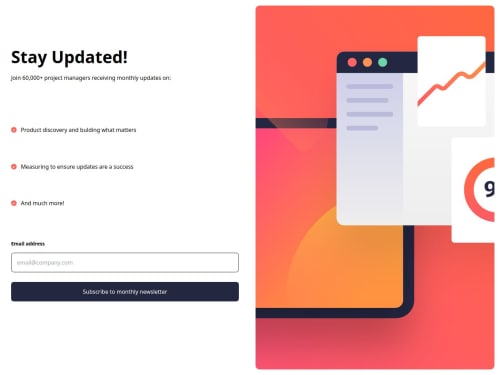Responsive Signup Page with React and Tailwind-css

Solution retrospective
I learned Context Api of react to avoid props drilling. I would like to learn other alternative methods in the future.
What challenges did you encounter, and how did you overcome them?I could not decide whether I should use between react router and conditional rendering for this project. At last, I decided to go with conditional rendering because it is easy for beginner.
What specific areas of your project would you like help with?I would like to know which is better
- Using percentage in width and height of div
- Using fixed rem for different vw.
Please log in to post a comment
Log in with GitHubCommunity feedback
No feedback yet. Be the first to give feedback on Myat Thiha Naing's solution.
Join our Discord community
Join thousands of Frontend Mentor community members taking the challenges, sharing resources, helping each other, and chatting about all things front-end!
Join our Discord